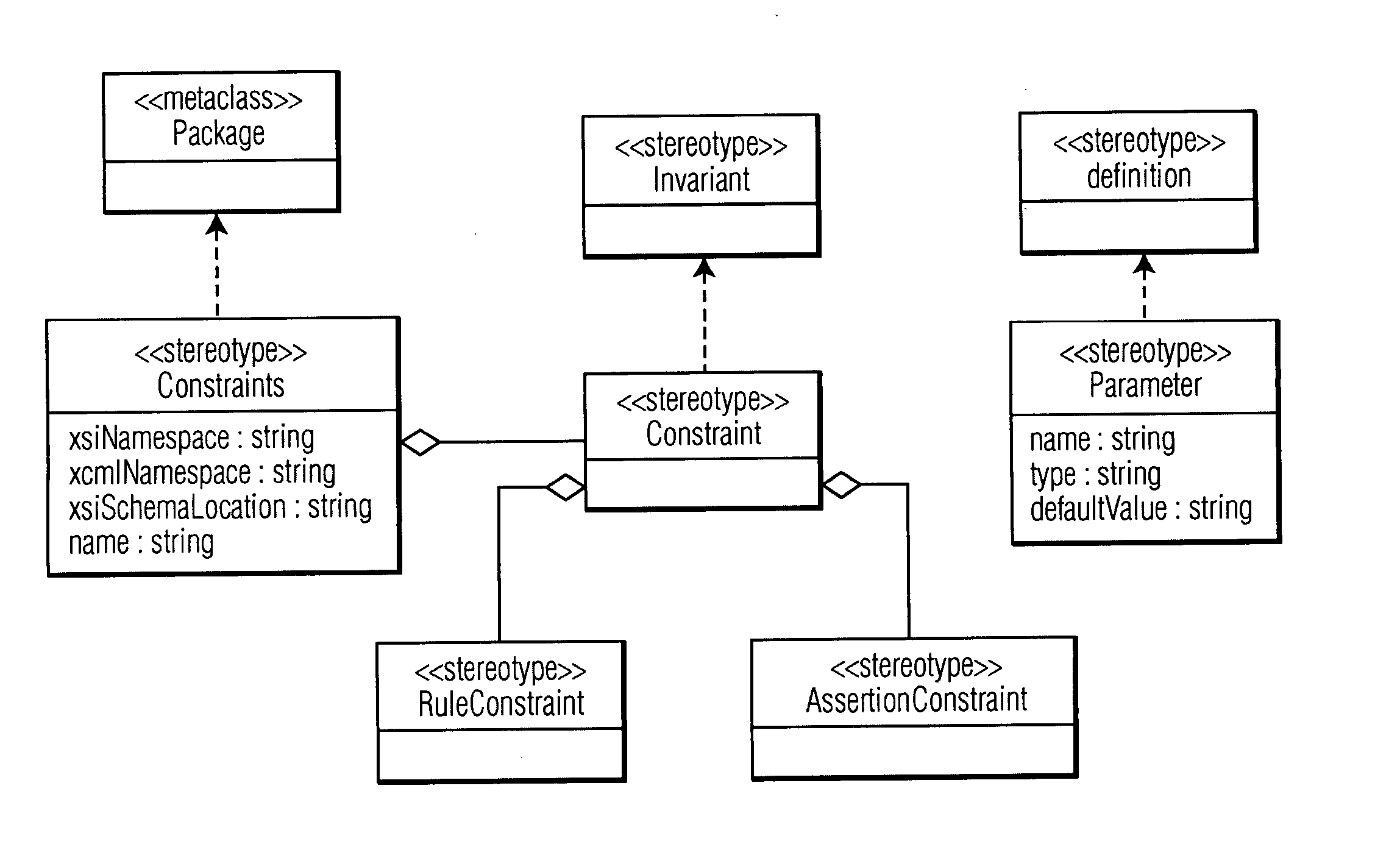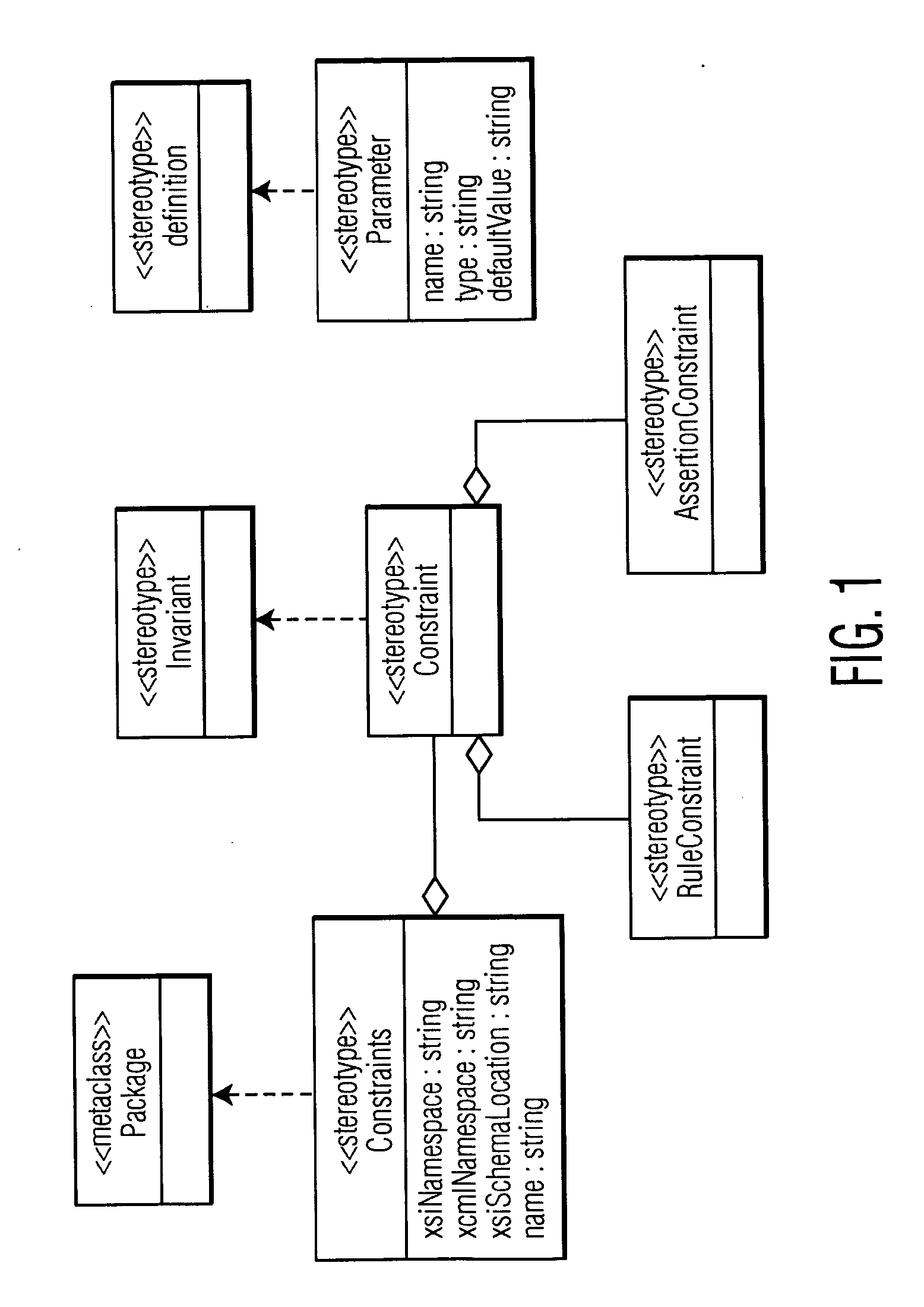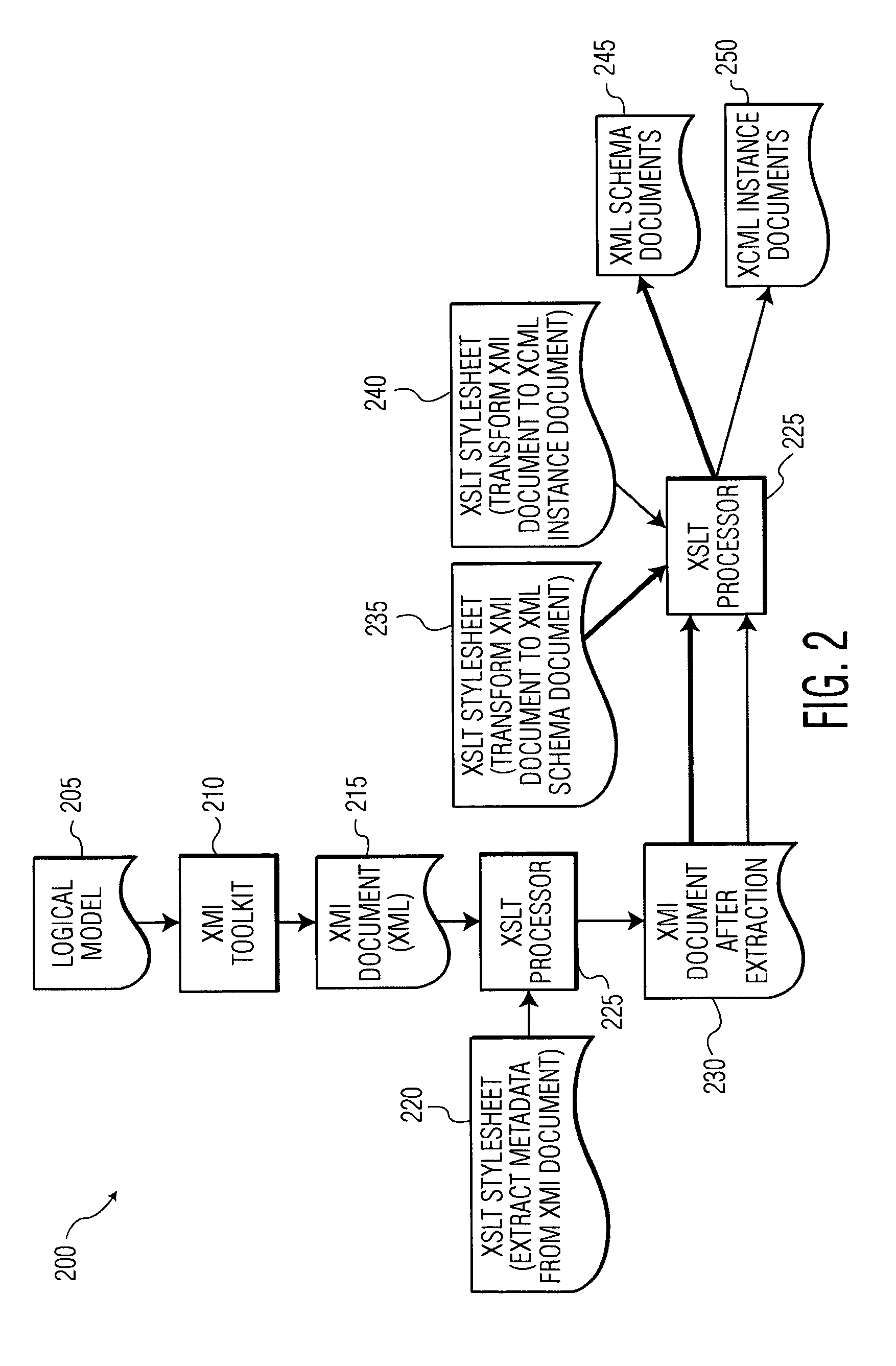Extensible constraint markup language
a constraint and markup technology, applied in the field of constraint markup language, can solve the problems of not being able to specify non-structural constraints, grammatically validated xml document does not guarantee itself to be meaningful, and cannot verify equally important non-structural semantic constraints on xml data, etc., to achieve the effect of reducing the complexity of designing complex xml data structures
- Summary
- Abstract
- Description
- Claims
- Application Information
AI Technical Summary
Benefits of technology
Problems solved by technology
Method used
Image
Examples
Embodiment Construction
[0041] Before explaining the disclosed embodiments of the present invention in detail it is to be understood that the invention is not limited in its application to the details of the particular arrangements shown since the invention is capable of other embodiments. Also, the terminology used herein is for the purpose of description and not of limitation.
[0042] The existing constraint languages cannot express certain constraints including dynamic value / occurrence constraints and composite rule-based constraints. The present invention, a new XML constraint language—XCML, is an XML based markup language. XCML provides a set of syntax elements to express both static and dynamic semantic constraints in their either simple or composite forms.
[0043] It leverages the core XML technologies including XML Schema and XPath. The XCML syntax is defined in an XML Schema document. XCML instance documents can be either embedded within XML Schemas as annotations or as separate constraint documents...
PUM
 Login to View More
Login to View More Abstract
Description
Claims
Application Information
 Login to View More
Login to View More - R&D
- Intellectual Property
- Life Sciences
- Materials
- Tech Scout
- Unparalleled Data Quality
- Higher Quality Content
- 60% Fewer Hallucinations
Browse by: Latest US Patents, China's latest patents, Technical Efficacy Thesaurus, Application Domain, Technology Topic, Popular Technical Reports.
© 2025 PatSnap. All rights reserved.Legal|Privacy policy|Modern Slavery Act Transparency Statement|Sitemap|About US| Contact US: help@patsnap.com



